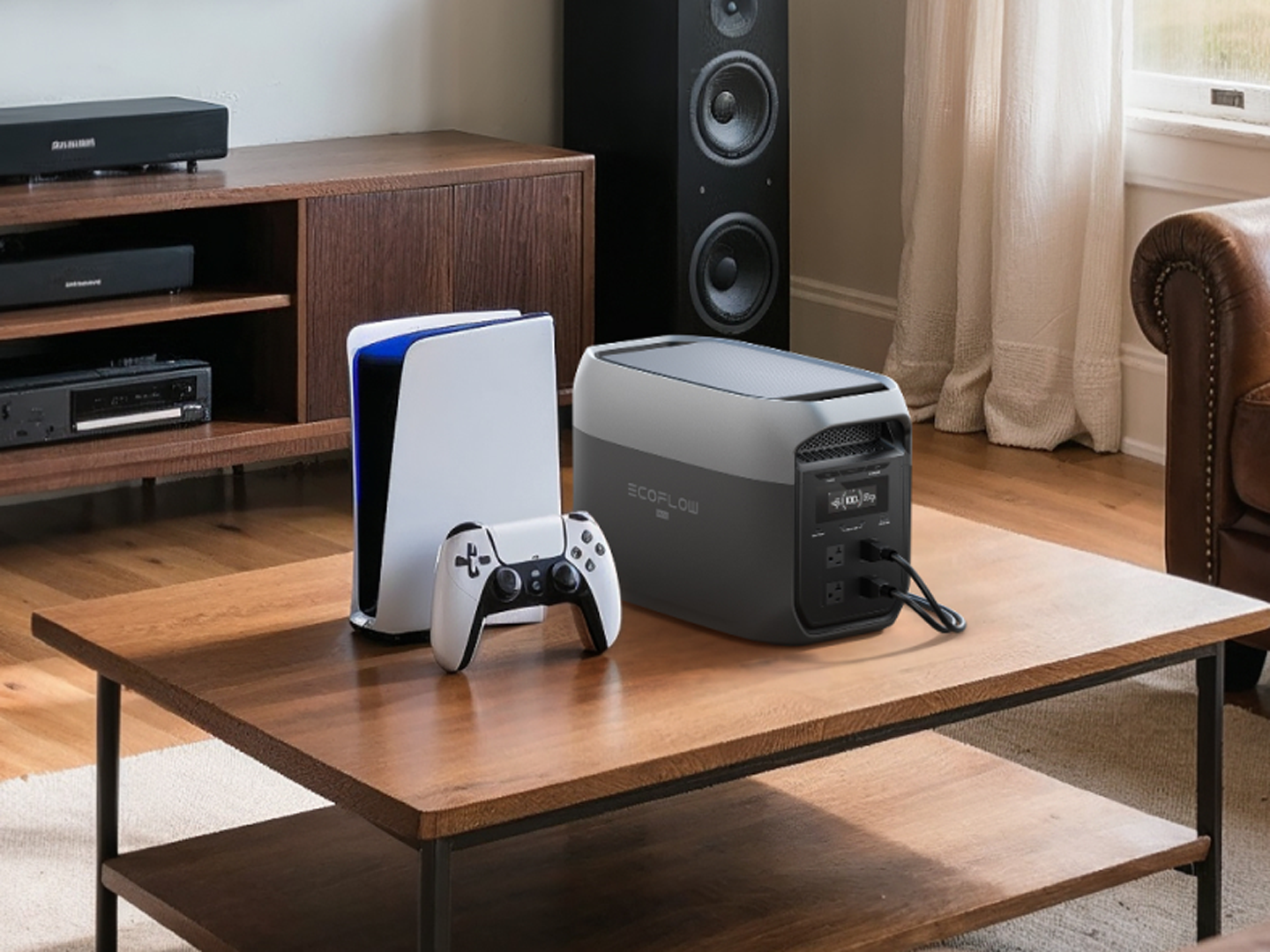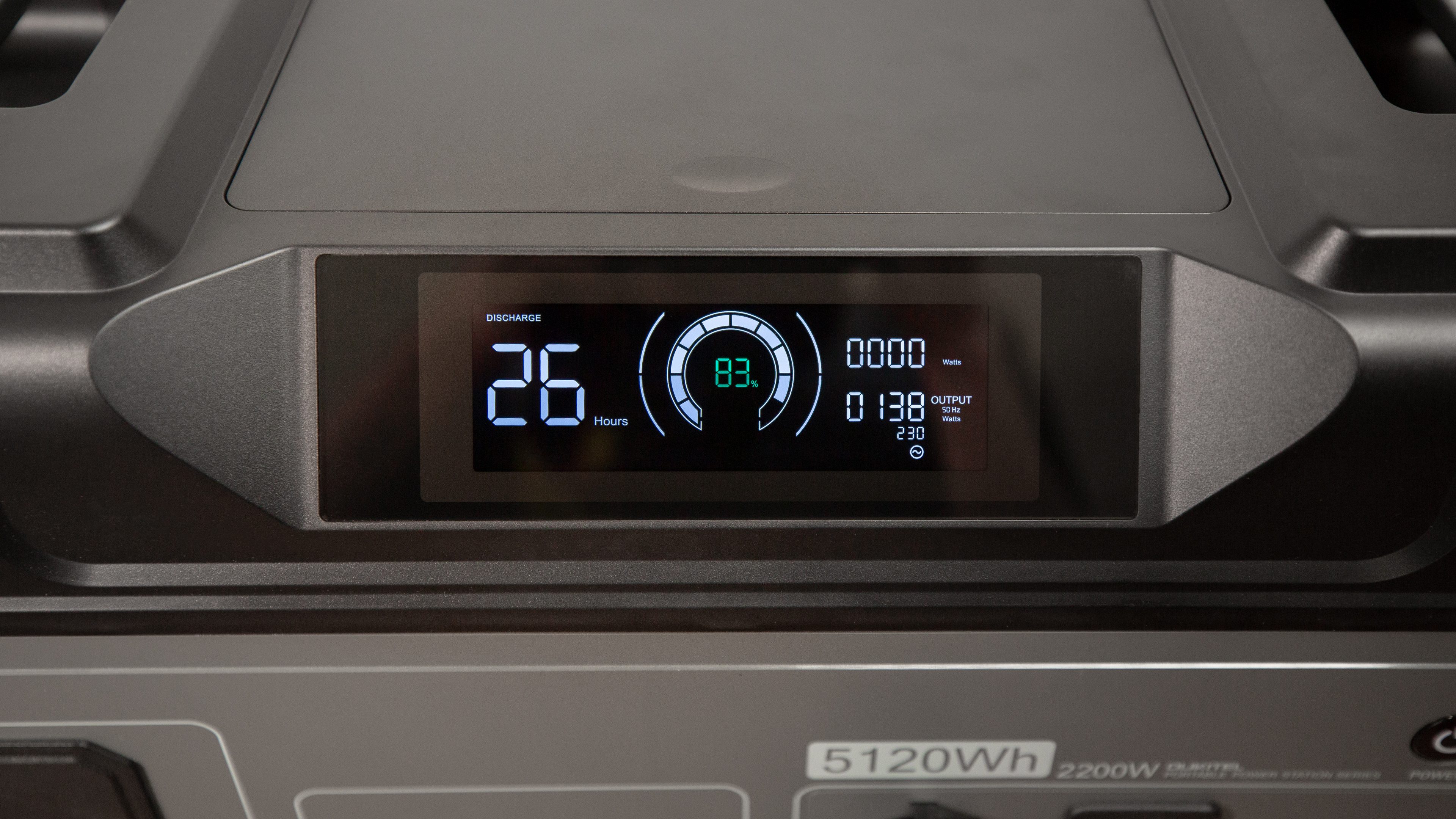
How long can a power station last until the battery is flat?
At first glance, the calculation is simple:
- The power of any device is typically specified in watts, i.e. in W. You can read how much energy a device consumes at most either—if available—on the power supply or typically where the power cable enters the device.
- The capacity of a power station is typically given in watt-hours, i.e. in Wh. You can usually find the capacity for power stations on the manufacturer’s website. It is the most important measurement for your power station.
A power station with 1,000 Wh capacity can supply a consumer with 1,000 W power consumption with energy for one hour and a 500 W consumer for two hours—right? Theoretically and by the rule of thumb: Yes. In practice, however, this question is unfortunately not quite so easy to answer.
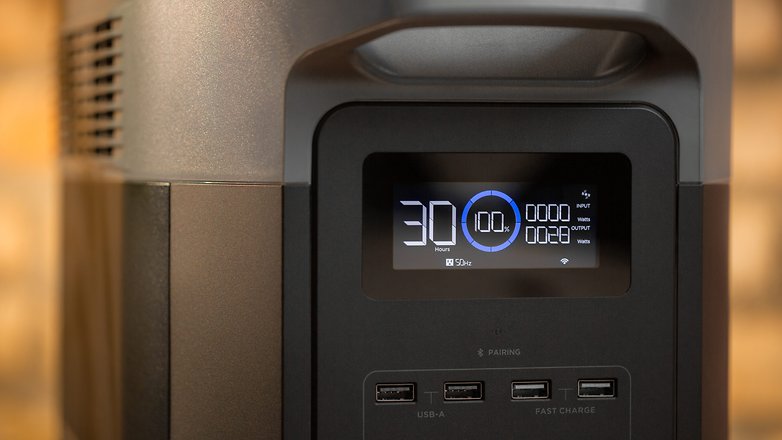
Factor 1: The inverter
Let’s first look at how the power station works. The energy is stored in the battery cells of your power station—and neither in the voltage nor in the type of voltage you need at the moment. For example, while direct current is stored in the cells, the 110 V (or 230 V in Europe) outlets output alternating current.
An inverter takes care of this conversion from direct current to alternating current. Typically, these inverters have an efficiency of about 90 percent. So, roughly speaking, 900 Wh of the 1,000 Wh from the power station are available for your end devices.
And so the 1,000 W consumer from the above example no longer runs for a whole hour, but only for 54 minutes.

Factor 2: The DoD
In addition, power stations do not use the full capacity of the installed battery cells, as these could suffer damage in the event of deep discharge. As a rule, the manufacturers set a limit for the maximum discharge here, the so-called Depth of Discharge, or DoD for short. Typically, the value is around 10%—you have 90% available for use.
If you now multiply the efficiency of the inverter (about 0.9) by the capacity available up to the maximum DoD (about 0.9), 81 percent is still available for your devices. In practice, a 1000-watt-hour power station thus offers you “only” 810-watt-hours of energy when fully charged.
To return to the example above with the 1,000 W consumer: In practice, you can run it for about 49 minutes on a 1,000-Wh power station.
How much energy do my devices consume?
So how long can I power my refrigerator during a power outage? How long can I bake waffles in the park? How many teas can I make while camping?
On the nextpit editorial water boiler, for example, it says: 2,000 to 2,400 W. So on a power station with 1,000 Wh capacity, the kettle can theoretically run continuously for 30 to 25 minutes. If you take the above factor of 0.81 into account, you still have 24 to 20 minutes. You would then have to try out how much water this is enough for and, for example, stop the time it takes for half a liter of water to boil.
For many appliances, the maximum power consumption is not very helpful. A refrigerator, for example, never runs at full load all the time. However, a look at the energy label will help you here. In the case of this Samsung refrigerator in energy class C*, 169 kWh per annum are listed here—calculated over the day, this corresponds to 463 Wh. The 1,000 Wh power station with a real available capacity of 810 Wh would therefore last 42 hours.
How long does a power station last until the battery is worn out?
So now you know how long you can power your fridge during a power outage. But assuming that you completely empty your power station every day, how long will the batteries last? After all, we all know from our cell phone and notebook batteries that the capacity eventually decreases.
In the manufacturer’s data sheets, you will usually find a specification for the charging cycles that a power station can manage until the battery falls below a certain capacity. Usually, this number refers to 80% of the original capacity, but occasionally you can also find information about the 70% or 50% mark.
Two different battery technologies currently prevail in power stations, which make a significant difference to the service life: LiFePO4 or LFP and lithium-ion. Most power station manufacturers are now converting their portfolio to iron phosphate batteries, i.e. LiFePO4, as this battery technology offers two elementary advantages.
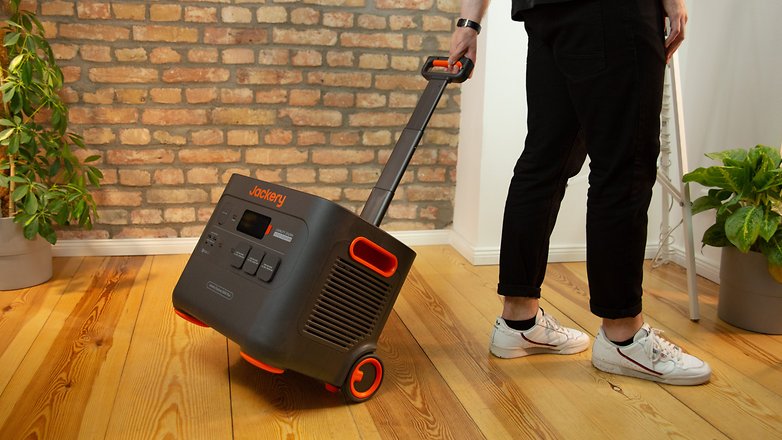
Advantage 1 of LiFePO4: More charge cycles
LiFePO4 batteries typically offer about 2,500 to 3,500 charge cycles, depending on the model and manufacturer, until they reach a remaining capacity of 80%. In the case of the Bluetti EP500 Pro (review), for example, the manufacturer promises that the power station still offers at least 80% capacity after 3,500 charge cycles.
A charging cycle describes a complete discharge process from 100 to 0%. To reach 3,500 charge cycles, you would have to run the Bluetti EP500 from 100 to 0 to 100% every day for almost ten years. If you only use 50% every day, you will need two days to complete a full charge cycle and thus achieve a “lifetime” of 20 years!
However, a power station can still be used at 80%. However, your 1,000 Wh power station with 810 Wh of real available capacity would then only have 648 Wh available—and accordingly, the fridge from the previous example would no longer run for 42, but only 34 hours at a stretch.
But as I said, you really have to use your power station a lot for this—for example, as storage for a balcony power plant (test and comparison) or as an off-grid system.
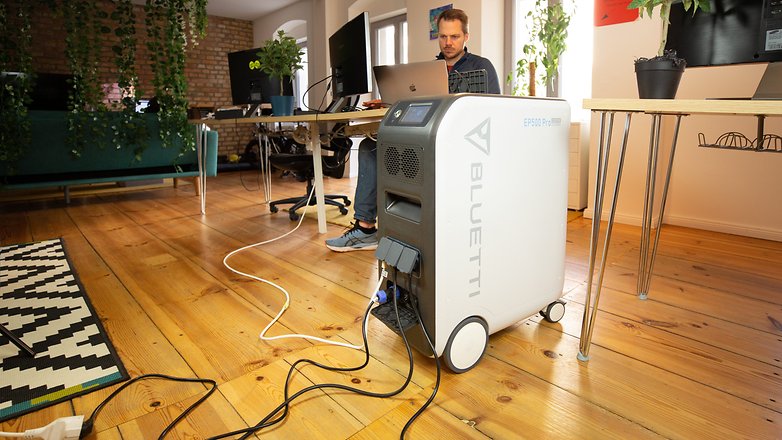
Advantage 2 of LiFePO4: More safety
Another advantage of LiFePO4 batteries that should not be underestimated is the topic of safety. Even if your power station gets a heavy blow, you don’t have to expect a catastrophic fire. On YouTube, you can even find videos (e.g. here) in which experimental YouTubers drill holes in LiFePO4 batteries. Of course, the batteries heat up and are subsequently unusable. But compared to the violent and hardly extinguishable fires of lithium-ion batteries, this is really harmless.
In case you wonder why lithium-ion batteries are predominantly used in cars: This technology offers a slightly better power density, which of course offers range advantages in a vehicle. But as long as you don’t carry the power station around on your back all the time, LiFePO4 is definitely the better choice.
Disadvantage of LiFePO4 batteries: the winter
However, lithium iron phosphate batteries do have one disadvantage: They don’t like the cold. Especially charging at temperatures below freezing is extremely bad for cell chemistry and durability. Some LiFePO4 storage units for balcony power plants or home storage units therefore have integrated heaters to guarantee that the cells are kept at temperature even in winter.






